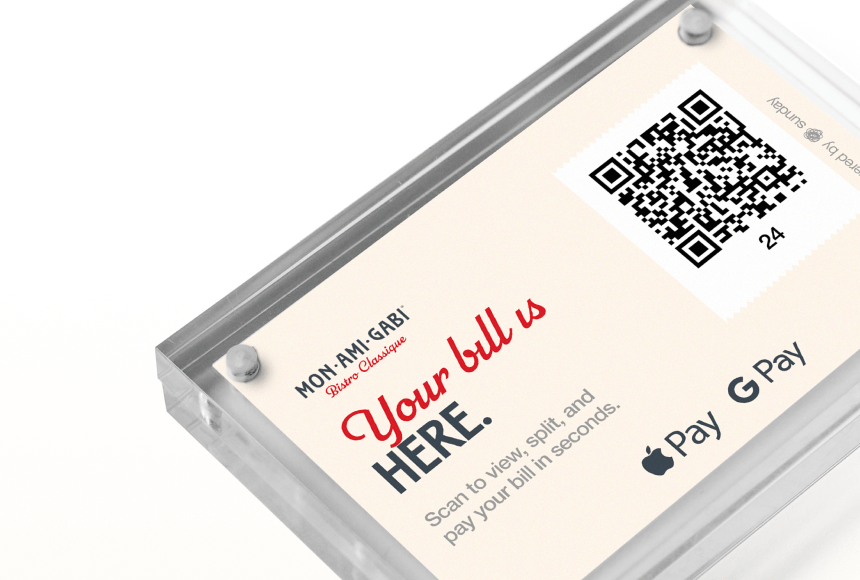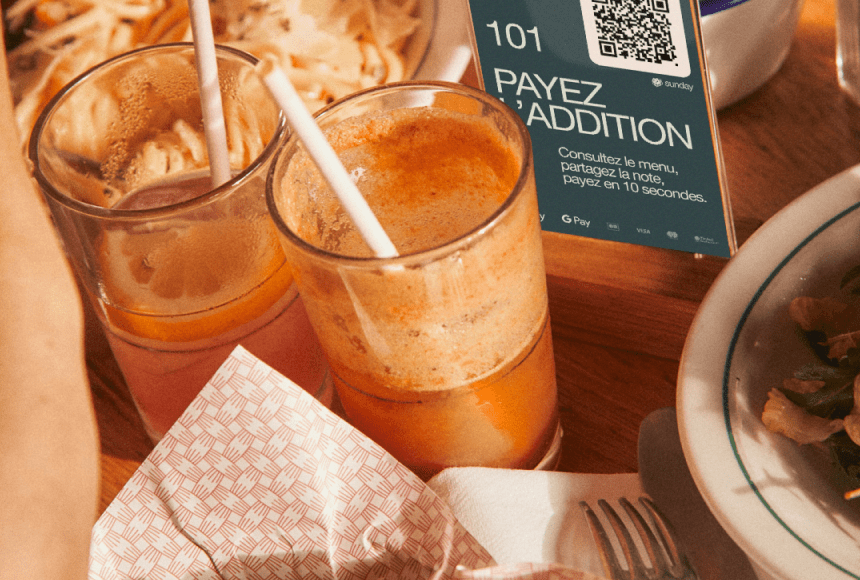
Supercharging Your Restaurant’s Service with AI-Driven Payment Data
Why Payment Data Deserves Your Attention
Running a restaurant often feels like orchestrating a constant juggling act. You’re juggling quality ingredients, fluctuating labor costs, rising guest expectations, and a multitude of operational details—from restocking produce to perfecting your plating style. In this delicate balance, payment data can sometimes be overlooked as a boring line item rather than the treasure trove of insights it truly is.
But take a moment to think about what payment data actually represents: real-life snapshots of your customers’ behavior, preferences, and spending habits. Each transaction isn’t just a sum on a receipt; it’s a close-up look at what your guests like, how frequently they dine out, which items they gravitate toward, and even how they prefer to tip. By withdrawing meaningful insights from these numbers, you gain a front-row seat to your customers’ wants and needs—knowledge you can use to refine everything from your menu offerings to your marketing approach.
In recent years, artificial intelligence (AI) has emerged as a powerful tool for analyzing these complex data points quickly and accurately. Instead of spending hours manually sifting through sales reports, you can harness AI to detect trends, highlight areas of improvement, and forecast customer behavior based on historical patterns. More precise predictions mean smarter decisions and, ultimately, a smoother dining experience for your guests.
When integrated properly, even a single piece of data—like the average favorite dessert in a certain ZIP code—can fuel marketing campaigns, shape your promotions, or prompt you to adjust your team schedules. The bottom line is this: Payment data matters. It’s a direct channel to your guests’ habits, and through AI, you can decode the story behind every purchase.
Embracing AI for Smarter Operations
So how exactly can AI help restaurants turn raw payment data into actionable steps? Think of AI as your behind-the-scenes culinary partner—always ready to lend a hand in ways you might not immediately see. Here are a few practical examples:
- Menu optimization: AI flags best-selling dishes and items that rarely get ordered, helping you refine menus more thoughtfully.
- Predictive forecasting: By analyzing your historical sales patterns, AI can predict how many guests might walk in on a given weekday and how much inventory you’ll need.
- Personalized promotions: AI relies on recurring payment data to gauge what your regulars enjoy, relaying offers that resonate better than generic email blasts.
- Shift scheduling: By forecasting busy versus slow times, AI helps you staff more efficiently—reducing labor waste while ensuring top-notch service.
All these functions stem from one core element: guest data. Payment information tells you a lot about who’s dining with you and what they buy. You can combine that knowledge with reservation data, feedback from reviews, and loyalty app stats to build a data-driven, 360-degree view of your business. AI allows you to see patterns that simply aren’t visible in rows of numbers, guiding more confident decision-making at every turn.
For instance, suppose a small barbecue joint starts noticing a spike in credit card transactions around mid-afternoon, specifically for takeout. AI’s predictive analysis might reveal that local office workers prefer a snack-size portion between lunch and dinner. This insight could encourage the restaurant to launch a new mid-afternoon special that satisfies that craving and further boosts revenue. AI not only uncovers the trend but also provides a deeper understanding of why it’s happening.
Turning Transaction History into Guest-Focused Service
Let’s talk about the practical ways that analyzing payment insights can transform the guest experience. Imagine you have a table of guests scanning a QR code to pay—like the one offered by sunday. The digital record you gain from this transaction is a gold mine of data, from their preferred method of payment (credit card, mobile payment, etc.) to the tip they leave. Multiply that by hundreds or even thousands of guests every week, and you can begin noticing clear patterns.
Here’s how you can directly apply those insights to improve service:
- Tailored greeting and service flow: If your returning guests typically spend more time chatting over appetizers before ordering entrées, then your servers can pace the meal accordingly—offering consistent yet subtle check-ins.
- Seamless upselling: AI can suggest upsells based on previous purchase combinations. If a lunch guest often orders iced tea with a sandwich, the server (or your kiosk) can gently nudge them about a refill or dessert of the day.
- Speed and convenience: By looking at average transaction times, you can spot periods where payment tends to lag—maybe your terminals are understaffed or the Wi-Fi is weaker near certain tables. You can use this insight to improve checkout efficiency, whether that’s upgrading your payment terminal or adding more staff at crucial times.
Whether you run a modern gastropub in Chicago or a cozy bistro in rural Maine, your payment data will look different. What matters is consistently tracking it, analyzing it, and taking swift action when you see meaningful patterns emerge. This direct link between payment intelligence and service improvement is at the heart of building guest loyalty.
Real-World Examples and Success Stories
Visualizing the potential of AI and payment data sometimes gets easier with real-life stories. Let’s look at a fictional—but perhaps very relatable—case of Maria, who runs a small chain of family-style Italian restaurants:
- The challenge: Maria noticed her dinner sales were solid, but lunch orders were lagging. She also saw a spike in takeout requests during specific times. However, she wasn’t sure how to divide her team’s time or which new specials to offer.
- The AI-based solution: With the help of a POS system integrated with an AI analytics tool, Maria began sorting transactions by average ticket size, time of day, and order type (dine-in vs. takeout). AI crunched all those numbers and flagged a pattern: local offices placed large group orders on Wednesdays and Fridays, pushing takeout revenue up. Dine-in lunch traffic, however, dwindled on Mondays and Tuesdays.
- The outcome: Acting on these insights, Maria rolled out limited-time lunch specials for Mondays and Tuesdays, paired with a “Work-from-Office Wednesday” group deal. Within six weeks, her average lunch revenue climbed by 20%. Meanwhile, the new Wednesday group deal was a hit—her staff was prepped in advance, meaning orders rolled out smoothly, and reviews spiked on Google for prompt service.
This story is fictional, but it’s grounded in what many restaurant owners experience daily: a hidden opportunity in the data they already have. According to the Deloitte “Restaurant of the Future” report, leveraging guest information for personalization and convenience is one of the top drivers for growth. By automating the data analysis process, restaurant owners gain clarity faster—reducing guesswork and unlocking real opportunities for revenue and guest satisfaction.
Elevating the Guest Experience with Personalization
In today’s restaurant landscape, personalization goes far beyond choosing sausage vs. pepperoni on a pizza. Guests crave an experience that aligns with their tastes, schedules, and lifestyles. Payment insights serve as a key puzzle piece in this personalization strategy. Think of it like seasoning: just the right amount can transform a dish from bland to brilliant.
Data-driven personalization might include:
- Smart loyalty programs: If your AI tool shows that a particular demographic tends to try new menu items more often, you could offer early-bird tastings or loyalty rewards for sampling a new dish.
- Targeted marketing campaigns: Knowing times of day when certain age groups dine with you can help you tailor social media ads or promotional emails to match those patterns.
- Customization on the spot: Servers can use integrated notes about returning customers—like a preference for gluten-free bread or a known allergy—to make the guest feel immediately valued and understood.
A Forbes article on AI in restaurants points out that personalization through data analytics can lead to repeat visits and stronger word-of-mouth. When diners feel known and appreciated, they’re far more likely to return—and bring friends along.
Hotels have mastered personalization for decades through loyalty programs and membership tiers. Restaurants can adopt a similar mindset, offering experiences uniquely tailored to each guest’s payment behavior. You might set up a system where a known wine enthusiast is automatically notified of your newest wine flights, or a family of five receives an alert when a kid-friendly promotion rolls out. It’s all about forging a personal connection that extends beyond the meal itself.
Strengthening Staff Performance Using AI Insights
Paying attention to your payment analytics doesn’t have to be just about customers; it can also highlight areas to support your team. For example, AI might identify that checks are significantly higher for tables served by a particular server, suggesting that this staff member excels at upselling or forming a genuine relationship with customers.
Conversely, if certain staff experience slow payment times on certain days, the data might indicate a need for more training or an adjustment in shift patterns. Rather than waiting for monthly staff reviews, these insights allow you to provide timely guidance, boosting performance sooner rather than later.
Possible ways to do this include:
- Actionable feedback loops: Share data-driven feedback with your team in short, constructive debriefs, focusing on immediate improvements.
- Rewarding top performers: If a server consistently scores high on guest satisfaction and tips, celebrate and replicate their best practices across the team.
- Streamlining your workflow: AI might uncover unexpected lags at certain times, letting you shuffle responsibilities or cross-train staff so they can assist each other during peak hours.
When your staff is aligned with data insights, their job can feel more rewarding and less stressful. They know what to expect, and they have concrete benchmarks for success. Plus, it’s easier to train new hires using real examples of what works (and what doesn’t) in your specific environment.
Digital Payments and the Power of Real-Time Feedback
QR code payment systems, like the one from sunday, offer an additional advantage beyond speed: They create an instant open channel for feedback. A guest scans, pays, can quickly leave a tip if they’d like, and might be prompted to drop a review on Google. This short feedback loop doesn’t just benefit your online reputation—it also integrates seamlessly with AI analysis. As new data flows in, your system can update your performance metrics in near real time.
This continuous feedback cycle also helps you spot trends. Are your new promotions prompting better tips or more positive reviews? Are guests complaining about wait times during a certain dinner rush? Instead of waiting for the end-of-month breakdown, you can see what’s happening in a matter of days or even hours and pivot more quickly.
According to the National Restaurant Association’s 2023 State of the Restaurant Industry report, restaurants that integrate contactless payment technology see higher guest satisfaction and faster turnaround on feedback. By proactively responding to that feedback, you foster loyalty and increase the likelihood of repeat visits.
Integrating AI Tools: Where to Start
Even if you’re convinced that AI might help your business, it can be daunting to figure out where to start. Here are a few steps to ease the transition:
- Pinpoint your objectives. Are you aiming to cut down on wait times? Increase average check sizes? Identify your best-selling items? Knowing your goals helps you choose the right AI tools from the get-go.
- Select user-friendly tech. Look for a payment terminal or POS system that offers integrated analytics. Tools that automatically stitch together data from multiple sources (like reservations, loyalty apps, and online ordering) can save you hours of labor.
- Clean your data. AI is only as good as the information it’s fed. Make sure your transaction details are accurately labeled—for example, if you add a new dish, keep it consistent across the menu and database.
- Train your staff. Once you introduce AI-driven insights, share them with your managers and servers. The more your team understands the “why” behind certain decisions, the more effectively they’ll implement change.
- Test and iterate. Start small. Focus on one area—like marketing or scheduling—and expand as you get comfortable. AI thrives on trial-and-error, refining its predictions with each iteration.
The key is integration. An isolated AI tool won’t move the needle if it’s disconnected from your everyday workflow. But when your POS system, staff scheduling app, contactless payment terminal, and marketing platform communicate with one another, it’s like the drums, bass, and guitar all clicking into place. Data flows seamlessly, and you get consistent, reliable insights.
Practical Tips for Maximizing AI-Driven Payment Insights
Let’s take a quick look at some actionable ideas to get serious value from your AI-powered analytics:
- Spotlight slow hours: Analyze transaction timestamps to spot slow periods. Fill these gaps with time-limited discounts or small tasting menus.
- Track tips over time: If AI shows your tip percentages spike on weekends, consider ways to replicate that atmosphere during weekdays—maybe through curated music or special service styles.
- Build seasonal menus: Payment data from previous years can guide your seasonal rotation. If certain dishes always shine in winter, lean on them more heavily. If a holiday event was a flop, rework the strategy or try a different angle.
- Set real-time alerts: Many analytics suites let you set triggers for anomalies. If your sales dip unexpectedly during what’s normally a high-traffic lunch rush, you’ll know in near real time.
- Embrace micro-segmentation: Instead of dividing guests just by “returning vs. new,” try micro-segmentation. Group them by meal preference, tip size, or typical dining time, and tailor specific offers to each group.
Remember, AI isn’t about making your restaurant feel impersonal or robotic. It’s about using data so you can be even more personal. By understanding what people want—sometimes before they do—you can elevate the entire guest experience.
Implementation Challenges and How to Overcome Them
Every major change meets a hurdle or two. Introducing AI to your payment processes requires careful planning. Here are a few challenges restaurant owners commonly face, and tips for tackling them:
- Lack of internal expertise: Don’t fret if you or your staff aren’t tech-savvy. Plenty of AI solutions come with hands-on support or easy-to-follow tutorials. Start with the basic features and expand at your own pace.
- Data privacy concerns: Ensuring you comply with local regulations is crucial. Partner with reputable payment providers who prioritize data security, encryption, and compliance with relevant laws (like PCI DSS in the US).
- Overcomplexity: More isn’t always better. If you try to track every conceivable metric, you can get overwhelmed. Start with the handful of data points that align directly with your most pressing needs.
- Staff resistance: Some might fear AI replacing their roles. Emphasize that AI is a tool, not a replacement. It frees your team from repetitive tasks, allowing them to focus on delivering the personal touches that make your restaurant stand out.
Think of introducing AI like rolling out a new appetizer: You want to test it, get feedback, tweak, and grow your confidence. The key is a steady, purposeful approach.
Case Study Revisited: From Numbers to Action
Let’s circle back to that example of Maria’s Italian restaurant chain. After seeing improved lunch revenue, she decided to focus on dinner. AI revealed a trend that might surprise some: many guests spent over 15 minutes waiting to pay, impacting turnover. Although her servers were friendly, they struggled during peak dinner hours to handle the surge in payments.
She introduced a contactless payment system at each table, enabling guests to scan a QR code, review their bill, add a tip directly, and leave optional feedback. The result? Payment times dropped by an average of 25%, and her online reviews soared. Shorter wait times and easy tipping felt like a VIP-level convenience to her guests, and her staff had more breathing room to focus on genuine hospitality rather than hurrying from table to table.
Every stage of this transformation—from spotting slow lunch sales to improving dinner turnarounds—was fueled by insights from payment data, made effortlessly clear with AI analytics. Maria’s story is a perfect example of how focusing on guest information can spark real, quantifiable improvements—and is within reach for small and large establishments alike.
Frequently Asked Questions
How can AI help me predict demand?
AI looks at past transaction data—like the number of orders, average spend, and item popularity—and looks for patterns. If it recognizes that your sales peak on Wednesday evenings, it factors in seasonality, local events, and even weather data to forecast future demand, helping you staff and stock more accurately.
Is AI expensive to implement?
Many modern payment terminals and POS solutions offer built-in analytics. Some provide tiered pricing based on the features you need, allowing you to start small before investing in more advanced capabilities. In many cases, the cost is offset by the improved efficiency and increased sales you’ll see from data-driven decisions.
What about data security and privacy?
It’s a valid concern. Always choose solutions that follow industry-standard security practices like PCI DSS compliance in the US. Encrypting transaction data, maintaining secure servers, and limiting access to authorized personnel are all essential steps to protecting your customers’ information.
Will AI replace my staff?
Absolutely not. AI performs the heavy lifting of analyzing data, but your staff’s human touch, personality, and experience remain central to your brand identity. Think of AI as a support system that helps your team work more intelligently and focus on the guest experience.
How do I get my team on board with AI?
Explain that AI-powered systems reduce busywork and create opportunities for stronger guest connections. Provide hands-on training, let them test the new tools, and celebrate small wins—like shorter wait times or higher tips—that demonstrate clear benefits for everyone involved.
Fuel Your Growth with Data-Driven Decisions
AI and guest data aren’t just buzzwords; they’re catalysts for smarter operations, more personalized service, and higher revenue. By collecting and analyzing payment insights—from how guests spend to when they’re most likely to tip generously—you gain a clear roadmap for building a better dining experience. Whether you’re a mom-and-pop café or a sprawling restaurant group, the principles remain the same: Gather the data, apply AI insights, and act swiftly on what you learn.
In an industry defined by warm hospitality and ever-shifting consumer trends, data can become your most dependable ally. By strategically weaving AI analytics into your payment processes—like contactless payment terminals and QR code–based solutions—you set yourself up for success in a competitive landscape. Your restaurant remains current, efficient, and most importantly, guest-focused.
So, don’t let those numbers gather dust. Unleash the power of AI on your payment data, adapt to what the data tells you, and keep your finger on the pulse of what your customers truly value. In so doing, you position yourself for strong growth—while keeping the heart of your restaurant firmly intact.
Find out more today
Drop us your details below and we’ll reach out within the next 24h
Get the full, detailed picture.
sunday elevates your business with insightful data, instant feedback and precise analytics.




